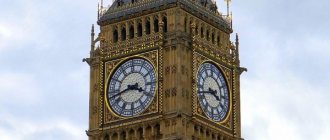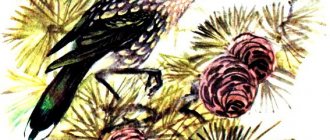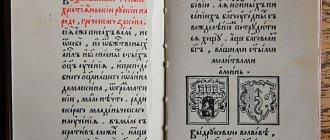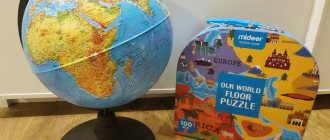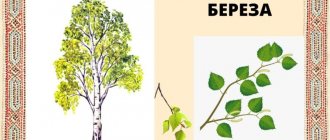Kremlin Moscow history briefly for children
Perhaps there is not a single person in our country who has never heard of the Moscow Kremlin. It is located in the very center of our Motherland and is visited by millions of tourists every year. But the Kremlin did not always look this way.
Its history begins with a small settlement of Vyatichi, which was surrounded by protective buildings and had an administrative building on its territory. The first mentions of Moscow date back to 1147, from which the age of our capital is calculated. Subsequently, the local population decided to strengthen the fortress, and by 1156 new walls made of oak beams were built.
Since 1264, the Kremlin was chosen as a permanent place of residence by the Moscow appanage princes, and after the strengthening of the Principality of Moscow in 1329, the Kremlin became its center. The Kremlin continued to be actively built up, and by the end of the 14th century there were oak towers, Chudov and Spaso-Preobrazhensky monasteries, and the Cathedral of the Savior on Bor on its territory.
The only disaster was the fires, as a result of which the Kremlin had to be rebuilt several times. The beams with which the walls and buildings were lined were easily ignited, and the fire quickly engulfed a large area. As a result, during the reign of Dmitry Donskoy, it was decided to build the walls and towers from white stone. Wooden buildings were finally banned under Peter the Great.
But the local stone turned out to be fragile, and new structures began to crumble, requiring constant restoration. Then the new ruler Ivan III decided to build walls and towers of red brick and expand the territory of the Kremlin. At the same time, the construction of new and reconstruction of old churches continued. Thus, the Cathedral of the Chudov Monastery, the Cathedral of the Ascension Monastery, the Church of St. Nicholas of Gostunsky and the building of the Treasury Court were built.
In the 17th century, secular buildings were created on the territory of the Kremlin: in 1624 the Spasskaya Tower was built, during this period the Terem Palace, the chambers of princesses and queens were built.
In the 18th century, Moscow ceased to be the capital, and the royal residence moved to St. Petersburg. During this period, no major events took place on the territory of the Kremlin.
After a fire in 1812, the Kremlin suffered significant damage, which took more than 20 years to repair. Significant constructions of the 19th century include the creation of the Cathedral of Christ the Savior and the Moscow Kremlin Palace. The Kremlin of that period was a favorite place for city residents to hang out. Entrance to it was open and free for everyone. This lasted until the start of the 1917 revolution.
With the coming of the Bolsheviks to power, everything that was connected with the previous regime was denied and destroyed. The Kremlin was no exception. In the first decade of Soviet power, more than half of the buildings of historical and cultural significance were destroyed, among which were: Chudov and Resurrection Monasteries, the Cathedral of the Savior on the Bor, and the Small Nicholas Palace. Moscow again became the capital, and the seat of the Soviet government returned to the Kremlin. From that moment on, the ruling elite began to live on its territory, and the entrance to the Kremlin was closed for citizens and guests of the capital. This situation remained until 1955.
The famous ruby stars appeared on the towers in 1937. During the Second World War, the Kremlin was shelled by German troops, but did not receive serious damage.
Since 1990, the Kremlin has become a UNESCO World Heritage Site.
Since 1991, the Kremlin has been the residence of the President of the Russian Federation. Over the past thirty years, its walls and towers have been restored, the Red Porch of the Faceted Chamber and some halls of the Kremlin Palace have been restored. Work on the restoration of the Kremlin continues to this day.
When was the modern capital of Russia founded?
Until now, scientists have not reached a consensus on the age of Moscow. For the first time its name appears in the Ipatiev Chronicle (1147). According to legend, Moscow was founded by Prince Yuri Dolgoruky. A few years later, he fortified the city by erecting wooden walls.
As for the origin of the name “Moscow”, it should be noted that in the Middle Ages not only Slavic, but also Finno-Ugric tribes lived here. Most likely, it was from the vocabulary of the latter that the word “mosk” was taken, meaning something raw and viscous. Scientists explain this origin of the city’s name by the fact that in ancient times there was only a small swamp on the territory of the modern metropolis.
Tsar Bell and Tsar Cannon short story for children
The Tsar Bell was preceded by two other bells: the Godunov bell and the bell cast by order of Tsar Alexei Mikhailovich. It is noteworthy that both had a similar fate: they served for almost fifty years, but split due to severe fires.
Tsar Bell in the Kremlin
Anna Ioanovna, in memory of her reign, decided to re-cast the last bell, and by her decree of June 26, 1730, she ordered the old bell to be melted down with the addition of tin and copper. It was assumed that the new bell would weigh about two hundred tons.
The work was undertaken by bell-making masters, father and son Motorina. Due to its large size, they decided to cast the bell directly in the Kremlin, for which they dug a hole ten meters deep in the square and placed a mold inside. The metal had to be melted in four furnaces at once, which were installed next to the pit.
Pit for casting the Tsar Bell
The work on casting the bell did not go smoothly: first, two furnaces broke down in turn, then it turned out that there was not enough tin and copper, therefore, it was necessary to re-order and wait for the delivery of materials. But, despite the difficulties, the bell was cast on November 23, 1735. It was more than six meters in height and 6.6 meters in diameter. For its impressive size it was nicknamed the Tsar Bell.
But the new bell was never destined to ring, since already in the summer of 1737 there was a fire in the Kremlin, as a result of which the stage on which it stood burned out, as a result of which the bell fell into a hole, gave several cracks, and an eight-ton piece broke off from it . Repeated attempts to raise it after the fire were unsuccessful, and the Tsar Bell lay in the ground for almost a hundred years.
Raising of the Tsar Bell
Only in 1836, the Tsar Bell was installed on a pedestal by the French engineer Montferrand according to the design of the architect Mironovsky near the Ivan the Great Tower, where it is located today.
On the opposite side of the Tsar Bell in the Kremlin there is the Tsar Cannon - another masterpiece of foundry art. It was made of bronze by order of Tsar Fyodor Ivanovich by master Andrei Chokhov in 1586. It was nicknamed the Tsar Cannon because of its impressive size: it weighs almost forty tons, the diameter of the ornament is 1 m 34 cm, the outer barrel is 1 m 20 cm, the caliber is 89 cm.
Tsar Cannon in the Kremlin
For a long time, the Tsar Cannon existed without carriages and simply lay on a pedestal. Only in 1835 was a cast-iron carriage with ornaments and decorative cores cast according to the sketch of the architect Pavel de Witte and engineer Bryullov.
Initially, the Tsar Cannon was installed on the Execution Ground for greater impression; in subsequent centuries, its location changed several times. The last time, in connection with the demolition of the old building of the Armory Chamber, it was moved to the belfry of the Ivan the Great Bell Tower, where it remains today.
There is an opinion that the Tsar Cannon was loaded several times, but according to scientists' research, it did not fire a single salvo, since its design does not allow this.
A little about interesting people
Children will be interested to learn about famous people who were born or lived in Moscow:
- Aleksandrov A.V. is a famous composer. Born in Moscow. Known as the author of the USSR anthem.
- Akhmatova A. A. is a famous Russian poetess. She lived in Moscow since 1918. She was closely connected with this city, since her son was in one of the capital’s prisons.
- Bruce Y. V. is the most educated person in the country during the time of Peter I. He was the first to draw up an accurate map of the territory of the Russian Empire.
- Repin I.E. is a famous Russian painter. He moved to the capital at the age of 23.
These and many other people (among them are Paustovsky K. G., Ranevskaya F. G., Nekrasov N. A., Pasternak B. L., Mayakovsky V. V., Mendeleev D. I., Bulgakov M. A. ) created the history of the modern capital of Russia.
Vorobyovy Gory sights of Moscow briefly for children
Vorobyovy Gory is located on the high right bank of the Moscow River. They got their name from the surname of boyar Vorobyov, who received a village located in this area from the Moscow appanage princes for good service.
After the purchase of the village in 1453 by Princess Sophia, the Sparrow Hills became a favorite vacation spot for Russian princes, and later tsars. Ivan the Terrible and Peter I loved to visit the palace on Sparrow Hills. The palace was originally made of wood, then some of the mansions were made of stone. Over the years it fell into disrepair and was finally destroyed by fire in 1812.
Image of a wooden palace on Sparrow Hills
The oldest Temple of the Life-Giving Trinity is located on the Sparrow Hills. Wooden, it stood during the time of Princess Sophia; in 1811 it was rebuilt from stone. It is noteworthy that he survived and continued to work during the Napoleonic invasion and under Soviet rule.
Church of the Life-Giving Trinity on Sparrow Hills
At the beginning of the 19th century, the construction of the Cathedral of Christ the Savior began, but construction was stopped due to the identified tendency of the soil to landslides.
In pre-revolutionary times, Vorobyovy Gory was the site of Muscovites' summer cottages. Wooden slides like ice slides were built here and Krynkin’s restaurant operated.
During the period of Soviet power, Vorobyovy Gory was renamed Leninsky Gory and bore this name until 1999. An observation deck was built in 1948, which is a favorite place for newlyweds, tourists and ordinary citizens.
The famous building, erected on this territory by 1953, is the Moscow State University building, which is striking in its size: 240 m in height with a spire and 180 m without it, the number of floors in the main building is 36.
Moscow State University building
Another attraction is the cable car between Luzhniki and the observation deck.
Cable car on Vorobyovy Gory
It is impossible not to mention the Vorobyovsky reserve, which is a protected natural area of deciduous forest. There are three ecological trails along which excursions take place.
Interesting facts about Moscow during World War II
- In 1941, the Kremlin, like many other sights of the capital, was camouflaged. Already on the day war was declared, a Wehrmacht plane appeared over the city. The Germans managed to take many photographs and create an accurate map of the capital of the USSR. This led to an urgent need to change the Kremlin beyond recognition. Whole detachments of artists and architects, led by B. Iofan, were sent here. As a result, at the end of June the Kremlin looked like an ordinary residential area. The golden domes were hidden, the towers were repainted, and models of houses appeared on the square and slopes.
- An important event during the Second World War was the Battle of Moscow. Not only adults, but also schoolchildren need to know interesting facts about the course of military operations. More than 7 million people took part in this battle. This exceeds the number of people involved in the Berlin operation. It is also important to know that the blitzkrieg (the German plan for a rapid offensive and capture of the entire territory of the USSR) was thwarted precisely during the battle for Moscow.
Zoo attractions of Moscow for Children
The Moscow Zoo was opened in 1864 by the Russian Imperial Society for the Acclimatization of Animals and Plants, but until 1919 its existence was under threat. The reason for this is the lack of constant funding. The zoo had to survive by raising funds from ticket sales, donations and occasional rentals to private individuals.
Entrance to the Moscow Zoo, 1908
After the nationalization of the zoo and its transfer to the jurisdiction of the city authorities, the territory of the zoo was doubled, and the collection of animals and birds was also replenished.
Moscow Zoo, 1935
Even during the Second World War, the zoo did not stop operating, although some of the animals had to be evacuated to Sverdlovsk (Ekaterinburg) and Stalingrad (Volgograd).
The territory of the modern Moscow Zoo
To celebrate the 150th anniversary in 2014, a lot of reconstruction work was carried out, and today the updated zoo is ready to welcome new visitors every day from 7.30 to 22.00 (the ticket office is open until 21.00). The exhibition includes 1,132 species of animals, which is more than five thousand individuals. The zoo also has its own nursery, which is located one hundred kilometers from Moscow and is engaged in breeding new individuals.
Interesting facts about nature and art in Moscow
Parents, when telling interesting facts about Moscow to children, should not miss information about natural resources and cultural development in the city:
- The largest zoo in Russia is located in the capital. It was founded in the 19th century.
- In Moscow you can find a huge number of parks. The Alexander Garden is considered the oldest.
- The Russian State Library, located in Moscow, is second only to the Washington National Library of Congress in its collection of books.
- The oldest clock in the city is the Kremlin chimes.
- There are about five thousand museums in Moscow. But, unfortunately, they most often open their doors to guests of the capital, and not to local residents.
- The oldest city building that has survived to this day is the Assumption Cathedral.
Brief history of the Tretyakov Gallery for children
The famous Russian gallery originates from the private collection of merchant Pyotr Mikhailovich Tretyakov. The official date of creation is considered to be 1856. The first exhibition was opened in Zamoskvorechye in 1867 and was called “Moscow City Gallery of Pavel and Sergei Tretyakov.” In 1892, Pavel Tretyakov donated his gallery to the city, although he remained the main manager until the end of his life.
Initially, the exhibitions opened in the Tretyakov house on Lavrushinsky Lane, then there were not enough premises, and other buildings began to be added to the residential buildings specifically for the exhibition. The famous facade based on Vasnetsov’s paintings was built by 1903.
Image of the Tretyakov Gallery by Pavel Corey
After the revolution, the gallery was nationalized. The area of the gallery was constantly increasing due to the addition of neighboring buildings to it. In 1932, the closed Church of St. Nicholas in Tolmachi was taken over by the gallery to store exhibits.
During the Second World War, the exhibits were evacuated to Novosibirsk; the exhibition returned to Moscow only in May 1945.
Modern view of the Tretyakov Gallery
In 1985, the Tretyakov Gallery was merged with the State Art Gallery, and today the State Tretyakov Gallery is a complex consisting of buildings in Lavrushinsky Lane and Krymsky Val, as well as the Church of St. Nicholas in Tolmachi.
Interesting about modern times
What interesting facts about modern Moscow can you tell children?
- The modern business district "Moscow City" emerged only in the early 2000s.
- The Kremlin is the largest European fortress that has survived to this day.
- The Victory Monument is the tallest monument in the capital.
- In 1994, a law was introduced, which is still in force today, prohibiting dogs from barking between 11 pm and 7 am. If the owners do not take care of their pet, they are fined.
- Moscow is home to the largest number of billionaires in the world. New York is in second place for these indicators.
- The tallest television tower in Europe is Ostankino, located in the capital of Russia.
Purchases
Moscow is a real center of European shopping. Here you can find almost all the world's brands, and the number of stores in the Russian capital is no less than in New York or Milan.
The most popular shopping centers in Moscow:
- Okhotny Ryad is one of the best shopping centers in the capital, located near the metro station of the same name. It has 163 stores, including both premium brands and chain stores.
- Vegas is one of the largest shopping centers in Europe with an area of about 400 thousand km2. Located near Domodedovo airport on the 24th km of the Moscow Ring Road.
- GUM is one of the most famous shopping centers in the capital, located on Red Square. It is home to world famous premium brands.
- European is the most visited shopping center in Moscow. It has 8 levels and ample parking.
- Afimall City is one of the most famous shopping centers in Moscow with interesting architecture. It is one of the largest shopping centers in the capital and has 450 points, including shops, cafes, clubs, and a cinema.
- Crocus City Mall is one of the best premium shopping centers, including more than 150 boutiques.
TSUM
The largest market in Moscow is Sadovod, located on the 14th km of the Moscow Ring Road. It occupies a huge area of 40 hectares and includes 8,000 shops. The gardener is visited annually by 36.5 million customers.
To buy souvenirs, we recommend visiting Vernissage in Izmailovo.
Transport
It is better to explore the center of Moscow on foot, so it is better to choose hotels and apartments closer to its central part. To cover long distances, it is better to use the metro, which is relatively inexpensive and has an extensive network. Moscow public transport also includes trams, trolleybuses, buses and a monorail line.
For navigation, we recommend using the Yandex.Metro or Google Maps smartphone application.
The capital's public transport has a single ticket. Tickets can be purchased at any metro station. The most profitable solution is to use a reloadable Troika smart card, which can also be used in smartphones with NFC.
Many Moscow metro stations are real works of art. The most beautiful of them:
- Circle line - Komsomolskaya, Kyiv, Novoslobodskaya.
- Red line - Kropotkinskaya and Red Gates. Also on this line are the oldest stations, opened in 1936.
- Dark blue line - Kyiv, Arbatskaya, Revolution Square.
- Green line - Mayakovskaya.
Streets of Moscow
